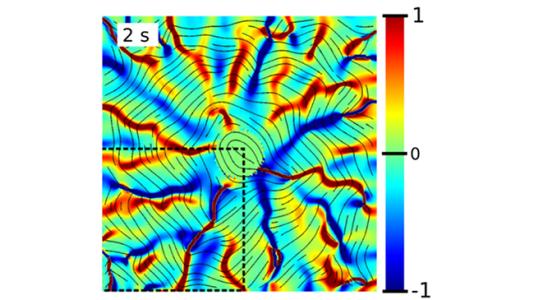
Scientific Achievement
The emergence of novel dynamic patterns comprised of branched radial bend stripes has been realized in circularly aligned active liquid crystals. The resulting stripes induce strong radial hydrodynamic flows that can be manipulated through design of the materials.
Significance and Impact
The work provides new fundamental insights into the behavior of active materials governed by the interplay of activity, elasticity and geometry. Induced hydrodynamic flows could potentially be used to direct and manipulate transport at the microscale.
Research Details
- A circularly aligned liquid crystal has been doped by active particles (swimming bacteria).
- The interplay between bacteria induced flows and the elasticity of the liquid crystal leads to the onset of dynamic patterns and flows.
- Nemato-hydrodynamic simulations are used to explain the origin of the observed patterns and flows.
Argonne National Laboratory seeks solutions to pressing national problems in science and technology. The nation’s first national laboratory, Argonne conducts leading-edge basic and applied scientific research in virtually every scientific discipline. Argonne researchers work closely with researchers from hundreds of companies, universities, and federal, state and municipal agencies to help them solve their specific problems, advance America’s scientific leadership and prepare the nation for a better future. With employees from more than 60 nations, Argonne is managed by UChicago Argonne, LLC for the U.S. Department of Energy’s Office of Science.
The U.S. Department of Energy’s Office of Science is the single largest supporter of basic research in the physical sciences in the United States and is working to address some of the most pressing challenges of our time. For more information, visit https://energy.gov/science.